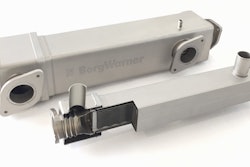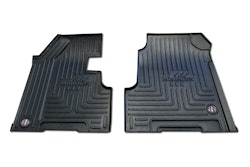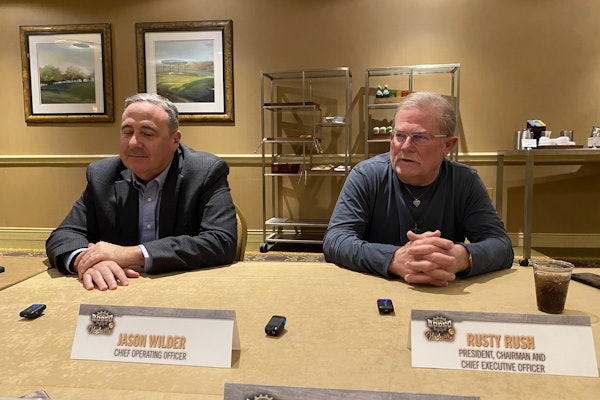By Bill Wade, Wade & Partners
Every survey says it, ‘Quality, Availability and Price’ is how I buy. Do you buy this?
Turning value-added services into a profitable venture is walking a tightrope, because so many customers do tend to focus narrowly on price. That, in turn, pushes heavy-duty distributors and truck dealers to measure themselves against one another based on price—a trap that can easily push value-added services even further down that “must have” criteria list that fleet maintenance guys are using.
“Customers are frequently unaware of the special perks they receive from distributors,” writes Richard Vurva in If it’s free, where’s the value? “The reason is because many distributors do a poor job of measuring the value of the services they promise.
And while salespeople say they have adopted a value-added approach with customers very few “put a real dollar value on the services their companies provide. Even if they can quantify their company’s value-added services, they’re often careless in giving them away to customers who don’t deserve or need them,” says Vurva.
To break out of this mindset, heavy-duty distributors need to be very intentional about the value that they’re providing. Communicating that intention to your customers via your sales team, for example, which should be trained to offer (in exchange for a fee) these add-ons as part of a complete package. If your sales reps and countermen don’t see the value in the products being sold they’ll start giving stuff away instead of creating an environment for selling an even bigger package that includes both products and services.
Why Win a Race-to-the-Bottom?
Here are more steps that you can take to encourage customers to invest in value-added services and to avoid the “race to the bottom” on price:
- Use value-added to set yourself apart. It’s no secret that Amazon Business has taken a keen interest in the vehicle parts and service distribution field, and that national distributors outside traditional heavy-duty channels have invested millions of dollars in e-commerce sites that offer deals galore. This doesn’t mean you have to join the party. If everyone is offering the same products and in most cases selling the same way, the question becomes how do you create a brand that sets itself apart from what everyone else is doing? That’s where the value-added proposition comes into focus, and helps independent distributors position themselves as the “go-to” sources for more than just the lowest-priced products.”
- Understand your own value. This is a tricky one for distributors that are used to giving customers the “complete package” while only really charging for the products themselves. A full line heavy-duty distributor that provides consulting, kits, and “comes to the rescue” every time a fleet calls, for example, has to understand its own value. In absence of this self-awareness, value-added becomes nothing more than a time- and money-suck for the distributor itself. Practice communicating this value in a way that customers understand (e.g., if we do THIS for you, your company will save THIS much time or money), Customers need to understand the value that they’re getting, or you can’t charge for it.
- Develop a plan of action. Don’t just decide that your company is going to offer specific technical expertise just because your competitor across town is doing it. Instead, look at your firm’s own offerings, strengths, and market advantages and develop a complete value-added plan around those elements. Shedding light where there is no darkness rarely creates value.
- Be intentional about communicating this plan. Both internally and to external customers and partners. Make sure fleets understand the value that you’re providing, and communicate that message in a very strong and convincing manner. Try charging for after-hours delivery, then ‘N/C’ it on the invoice of the best customers. When you communicate with intent, you’ll find that price—at least for your real customers—will become less of an issue.
- Don’t waste too much time on the tire kickers. An all-out effort to monetize value-added services should be reserved for those customers who will truly appreciate the services and expertise that you’re offering. There are always going to be customers who are nibbling at the periphery and just shopping around on price. While you may be able to help them understand that the best deal isn’t necessarily related to price, your true customers will comprehend that message and realize that your goal is to help them build and grow their businesses.
- Consider the mental process that a maintenance manager goes through when he needs a product order for the following day. What’s his top priority? Is it price, getting the parts delivered the next-day, having the follow-up support on those items, or all of the above?
As you ponder these questions, also consider how your customer really buys, when he buys, and what products he needs the most. From there, you can come up with ways to engage that customer throughout the entire job process—and not just when he needs something in a pinch.
This approach opens the door for numerous value-added opportunities. Understand the mental triggers that your customer goes through along the way and the process that they’re working through to buy from you. Then, help them do that more often.
Ultimately, turning value-added services into revenue-generating entities takes time, and the process itself may be painful—both for your company and its sales force (including especially counter people and customer service reps), and for the customers who are being asked to pay for these “extras.”
The good news is that with the right level of intent, and some customer education, fleets and other customers will come to see the value that you’re providing with those additional services.
Instead of just throwing a bunch of value-added options against the wall and hoping that something sticks. Come up with a real plan of action that creates a win-win situation for both you and your customer.
Bill Wade is a partner at Wade & Partners and a heavy-duty aftermarket veteran. He is the author of Aftermarket Innovations. Contact him at [email protected] if you’d like to discuss these concepts further.











